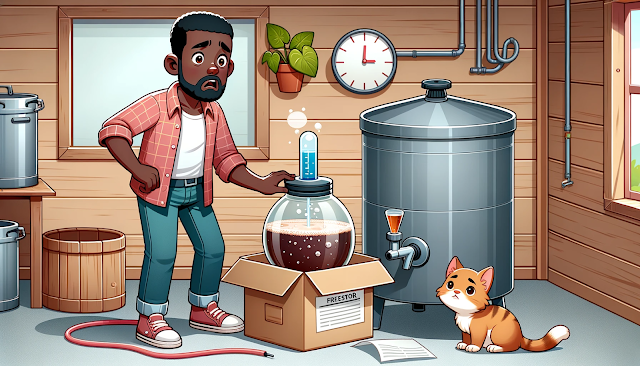But yeast is temperamental.
It's a Goldilocks situation.
Too cold, and fermentation slows to a crawl, leaving a stuck brew in its wake. Too hot, and stress takes over, generating off-flavors that can turn a masterpiece into a muddled mess. In extreme cases, heat can even kill the yeast outright, dooming the batch before it has a chance to shine.
Enter heat pads, an essential tool for homebrewers battling unpredictable temperatures. In cool environments, these simple yet effective devices provide a steady, controlled heat source, ensuring that fermentation stays on track. But not all heat pads are created equal—choosing the right one is as critical as selecting the right hops or malt.
Size, wattage, and adjustability all come into play. A heat pad must match the fermenter’s volume and the brewing space’s ambient temperature to maintain consistency without overheating. Those with adjustable output offer the brewer ultimate control, allowing them to fine-tune fermentation temperatures to suit the specific demands of a lager’s clean crispness or an ale’s fruity esters.
In the quest for brewing perfection, temperature control is non-negotiable—and a properly chosen heat pad just might be the silent hero behind your next great beer.

Mastering Heat Control: Optimizing Your Heat Pad for Fermentation
Once the right heat pad is in hand, positioning becomes the next crucial factor in achieving a stable fermentation temperature. A poorly placed heat pad can create uneven heating, stressing the yeast and leading to off-flavors. Placement strategies vary, but wrapping the pad around the side of the fermenter tends to distribute heat more evenly than placing it underneath, which can create hotspots.
Precision Temperature Monitoring: The Key to Consistency
With the heat pad in place, diligent temperature monitoring is paramount. Whether using a basic stick-on thermometer or a high-precision digital probe, keeping a constant eye on fermentation temperature ensures that the heat pad is doing its job effectively.
For heat pads without built-in thermostats, an external temperature controller becomes essential. These devices cycle the pad on and off to maintain the yeast’s optimal temperature range without overheating. Fermentation is a marathon, not a sprint, and wild temperature fluctuations can throw the entire process off course.
Balancing Heat for Efficiency
Using a heat pad isn’t just about hitting the right temperature—it’s about maintaining it steadily. Keeping the pad running continuously may seem like a safe bet, but this can cause temperature spikes that stress the yeast. Instead, cycling the heat—allowing the pad to warm the fermenter only as needed—ensures a consistent, energy-efficient process.
One of the simplest ways to improve efficiency? Insulation. A heat pad works best when paired with an insulating layer, such as:
✅ A fermentation jacket – Specifically designed to trap heat without overheating.
✅ A simple blanket or towel – Reduces heat loss and prevents the pad from working overtime.
✅ A temperature-controlled chamber – For ultimate precision, pairing a heat pad with a controlled fermentation chamber locks in stability.
Safety First: Avoiding Brewing Disasters
No brewer wants a preventable accident derailing their batch. Safety should never be an afterthought.
- Use brewing-grade heat pads – Not all heating devices are suited for the sustained operation required in fermentation.
- Keep it dry – Water and electricity don’t mix. Always ensure cords and outlets are well away from spills.
- Follow manufacturer guidelines – Not just to protect the warranty, but to protect the brewer and the brew.
Beyond Fermentation: A Multi-Use Brewing Tool
A heat pad isn’t just a one-trick pony—its utility extends beyond fermentation:
🔥 Yeast starters – Keeping a starter flask at an ideal temperature speeds up yeast propagation.
🍯 Decrystallizing honey – Meadmakers can use a heat pad to gently restore hardened honey.
🔬 Lagering warm diacetyl rests – For lager brewers, a heat pad can nudge fermentation toward a smooth, clean finish.
A heat pad, when wielded with knowledge and caution, is more than just a convenience—it’s a critical tool for precision brewing. Homebrewing isn’t just about throwing ingredients together and hoping for the best; it’s about understanding the nuances of yeast metabolism, temperature dynamics, and fermentation control. A well-integrated heat pad can mean the difference between a clean, well-attenuated beer and a batch that never quite hits its potential.








.png)